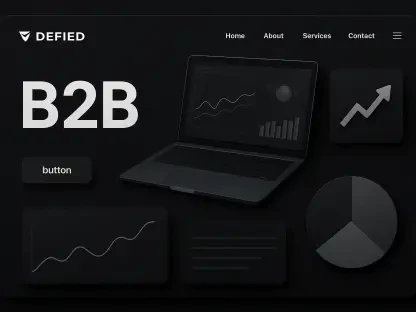Keyword research is a cornerstone of any successful SEO strategy. By identifying the right keywords, you can enhance your website’s search engine rankings, attract more organic traffic, and reach your target audience more effectively. This article delves into advanced keyword research techniques that go beyond outdated practices, ensuring your SEO efforts are both strategic and impactful.
Understanding the Importance of Relevance
Identifying Relevant Keywords
The first step in effective keyword research is determining relevance. It’s crucial to identify keywords that closely align with your products or services, as irrelevant keywords may attract visitors, but they won’t convert into customers. Using tools like Google Keyword Planner and SEMrush can help you find keywords that are pertinent to your niche and ensure that your content reaches the right audience.
For instance, if you run a local bakery, using keywords related to general baking might not be as effective as using specific keywords like “best cookies in [your city].” The more relevant your keywords, the higher the chances of attracting potential customers who are actually looking for what you offer. Moreover, relevance helps in getting higher engagement rates because your content resonates more with the searchers.
Avoiding Irrelevant Traffic
Using irrelevant keywords can lead to high bounce rates and low engagement. This not only affects your website’s performance but also impairs its ranking on search engines. If visitors immediately leave your page because they didn’t find what they were looking for, search engines take this as a signal that your content may not be valuable. Hence, it is imperative to focus on keywords that match the intent of your target audience to ensure higher engagement and better conversion rates.
Consider an example where a tech blog uses keywords related to fashion. While it might attract a large volume of visitors, these visitors won’t stay long or engage with the content since it doesn’t align with their interests. Over time, this hurts the website’s credibility and SEO effectiveness. Therefore, identifying and sticking to relevant keywords is paramount to maintain high-quality traffic and improve overall user experience.
Leveraging Semantic Keywords
The Role of Semantic Keywords
Semantic keywords are conceptually related phrases that help search engines understand the context of your content. These keywords are beneficial because search engines like Google use them to determine the overall topic and relevance of your webpage. Incorporating semantic keywords can enhance the depth of your content and improve its search engine ranking. Tools like Ubersuggest and SEMrush are excellent for identifying semantic keywords.
For example, if your main keyword is “photography tips,” semantic keywords might include “camera settings,” “portrait lighting,” and “photo composition.” By integrating these related terms naturally into your content, you signal to search engines that your page covers multiple aspects of the main topic, making it more comprehensive. This practice not only helps in ranking higher on search engines but also enriches the content, providing more value to your readers.
Enhancing Content Depth
By using semantic keywords, you can create more comprehensive and informative content. This approach not only helps in ranking higher but also provides more value to your readers. A well-rounded article on a single topic is more likely to attract backlinks, be shared on social media, and retain visitor interest. Ensure that your content naturally incorporates these keywords to maintain readability and relevance.
Consider writing an article on “home gardening tips.” Apart from the primary keyword, include semantic keywords like “plant care,” “seasonal plants,” and “organic fertilizers.” This technique enriches your content, making it a one-stop resource for anyone interested in home gardening. As a result, your website not only becomes valuable to readers but also gets favorably indexed by search engines, ensuring sustained traffic and engagement.
Analyzing Seasonal and Trending Keywords
Understanding Seasonal Trends
Seasonal keywords experience spikes in search volume at certain times of the year. For instance, terms like ‘sweaters’ see a surge in winter, and ‘swimsuits’ are popular in the summer. By analyzing these trends, you can plan your content strategy and marketing efforts more effectively to align with these search patterns. Google Trends is a valuable tool for identifying such seasonal keywords and understanding when they are most likely to be searched.
This analysis helps you to be proactive rather than reactive. For example, if you run an e-commerce site selling Christmas decorations, start optimizing your content and running your campaigns well ahead of the holiday season. This way, you are prepared to capture the increased search volume and ensure that your site appears prominently in search engine results when potential buyers are ready to make their purchases.
Capitalizing on Trending Keywords
Trending keywords can provide a significant boost to your SEO efforts if identified early. By tracking these keywords, you can create content that addresses emerging trends before they become saturated. This proactive approach can give you a competitive edge, as being among the first to cover a trending topic often means higher rankings and more traffic.
Using tools like Google Trends or Twitter’s trending topics, you can stay updated on what’s currently popular. Suppose a new fitness trend is emerging, like a specific type of home workout. By creating content around this trend early on, your site can become a go-to resource for information on the topic, thus driving considerable traffic and enhancing your site’s authority in the niche.
Conducting Preliminary Research
Generalized Preliminary Research
For beginners, conducting generalized preliminary research is essential. This involves understanding the broad topics and themes your target audience is interested in. It’s the foundation on which more detailed keyword strategies are built. Engaging with your customers, brainstorming ideas, and using tools like QuestionDB to gather insights can provide a strong starting point. By understanding the general landscape, you can create a more informed and targeted keyword strategy.
Engage with your audience through surveys, social media interactions, and customer feedback to gather insightful data. This direct engagement can reveal pain points, interests, and common queries that may not surface through tools alone. Combining these insights with generalized keyword research can offer a more holistic view of what your audience is really searching for and how you can address their needs effectively.
Focusing on User Queries
Understanding the queries your target audience is searching for can provide valuable insights. People often phrase their searches as questions, and tools like Answer The Public help uncover these common questions and topics related to your niche. This helps in creating content that directly addresses their needs and questions, improving your chances of ranking for long-tail keywords and featured snippets.
For instance, if you operate a travel blog, understanding that users often search for questions like “best time to visit Paris” or “top attractions in Rome” allows you to tailor your content to answer these specific queries. This strategic focus enhances your content’s relevance and authority, making it more likely to appear in search results for those particular questions, thereby driving targeted traffic to your site.
Performing Keyword Gap Analysis
Identifying Competitor Keywords
Keyword gap analysis involves identifying keywords that your competitors are ranking for, but you are not. This analysis helps you to uncover opportunities that you may have missed and provides new content ideas to attract more traffic. By leveraging tools like SEMrush’s Keyword Gap tool, you can directly compare your keyword portfolio with those of your competitors to identify areas for improvement.
For example, if your competitor’s site ranks well for “eco-friendly gardening tips” and you don’t, this presents an opportunity to create content around that keyword. This way, you not only fill a gap but also have the potential to draw traffic away from your competitors by offering even more comprehensive or engaging content around those keywords.
Creating Competitive Content
By understanding the keywords your competitors are targeting, you can create content that fills the gaps. This not only helps in improving your search engine rankings but also ensures that your content is more comprehensive and valuable to your audience. Competitive analysis allows you to position your website effectively by identifying weaknesses in your competitors’ content and delivering more valuable, in-depth, and engaging articles or pages.
For instance, if a competitor covers “beginner’s fitness tips” but only scratches the surface, you can create an in-depth guide that includes step-by-step instructions, video demonstrations, and expert interviews. This richer content not only helps you rank higher but also establishes your site as a trusted resource, improving both user experience and SEO performance.
Utilizing Essential Keyword Research Tools
QuestionDB for User Intent
QuestionDB excels in understanding user intent by offering a list of relevant keywords. It provides variations of a keyword or phrase in real-time, displaying search volume, CPC, keyword difficulty, competition level, and source for each keyword. This tool is invaluable for creating content that resonates with your audience. By understanding what users are asking about, you can tailor your content to meet their needs more effectively.
For example, if your main keyword is “digital marketing,” QuestionDB might reveal related queries like “how to use digital marketing for small businesses,” or “benefits of digital marketing strategies.” By addressing these specific questions, your content becomes more targeted and valuable, increasing its appeal and effectiveness in drawing organic traffic.
Semrush for Comprehensive Analysis
Semrush is known for its multifaceted toolbox, making it ideal for effective keyword research and analysis. It displays keyword intent, search volume, trend, difficulty, CPC, and SERP features. The SEO Content Template tool within Semrush assists in creating content briefs, optimizing content, and providing visual SEO recommendations, making it a comprehensive solution for all your SEO needs.
For example, when planning to write an article on “organic food,” Semrush can help you identify not just the primary keyword but also related terms, seasonal trends, and the competitiveness of each keyword. This detailed analysis enables you to craft a data-driven content strategy that maximizes your chances of ranking high in search engine results, ensuring your content is not only relevant but also highly competitive.
Google Keyword Planner for Detailed Insights
Google Keyword Planner is specifically designed for keyword research and can also analyze keywords post-research. It shows trends, search volume, CPC, and competition levels. The complete keyword research report is downloadable in CSV format, making it easy to share and analyze. This tool is especially useful for PPC campaigns, helping you to select high-impact keywords that align with your budget and objectives.
For instance, when planning a PPC campaign for a new product launch, Google Keyword Planner can help you choose keywords that not only have high search volume but are also cost-effective. This ensures that your ads reach a large but relevant audience without overspending, optimizing both your reach and return on investment.
Google Trends for Popularity Analysis
Google Trends helps analyze current and long-term popular keywords, identifying the best times of year to target specific search terms. Reviewing spikes in keyword popularity helps strategize content more effectively, ensuring you capitalize on high-traffic periods. By understanding cyclical trends, you can plan your content calendar to coincide with these peaks, maximizing visibility and engagement.
For example, if you notice a yearly spike in searches for “Halloween recipes” every October, you can prepare and publish relevant content in advance. This proactive approach ensures your website is well-positioned to capture the influx of searches, driving significant traffic during the peak period and making your content timely and relevant.
Answer The Public for User Queries
Answer The Public excels in uncovering user queries related to your target keywords. By providing a list of common questions and topics, it allows you to create content that addresses the specific needs and queries of your audience. This approach not only improves the relevance and value of your content but also helps in ranking for long-tail keywords and featured snippets.
For example, if your focus keyword is “vegan recipes,” Answer The Public might highlight related questions like “how to make vegan pasta” or “easy vegan desserts.” By creating content that answers these exact questions, you enhance your chances of appearing in search results for those queries, driving more targeted traffic to your site.
Understanding keyword intent is crucial; it’s not just about finding popular terms but about identifying the precise needs and motives of your audience. By focusing on long-tail keywords, which are specific and less competitive, you can tap into niche markets and enhance user engagement. Additionally, leveraging tools like Google Keyword Planner, SEMrush, or Ahrefs can provide valuable insights into search volume, competition, and trends.
Regularly updating your keyword list is essential as search behaviors and algorithms evolve. This proactive approach keeps your content relevant and competitive. Combining advanced keyword research with quality content creation ultimately sets the stage for a robust SEO performance, driving sustained growth and success for your website.









